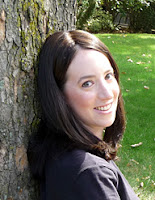Blog Tour: World Building with S.M. Boyce
About the author:
S.M. Boyce is a fantasy and paranormal fiction novelist who also dabbles in contemporary fiction and comedy. Her B.A. in Creative Writing also qualifies her to serve you french fries. She updates her blog a few times each week so that you have something to wake you up in the morning.
You can haunt S.M. Boyce at-
Fantasy Author S. M. Boyce’s Take on
World Building
Because of the heavy high fantasy
influences I’ve had in my writing career, I tend to give the setting a fair
amount of detail. I do my best to keep it as secondary, but many tell me the
worlds I create become characters all their own. That’s one heck of a
compliment, right?
In my opinion, setting is crucial
to a novel. It establishes the where and settles the reader into the novel by
giving them a concrete location. With a stable setting, the reader can dream as
big as they want and let the characters move through what is for all intents
and purposes a real place. The background becomes solid, and in making the
setting as realistic as possible, the author lets the characters take ownership
of the space.
The process of world building
itself is incredibly complex and subject to massive rewrites and revisions.
It’s all about finding a balance between too much and too little description.
Fact is, you’ll never make everyone happy. I hear reviewers say the setting was
perfect just as often as I hear others complain the description went on too
long. So I do what makes me happy.
Step One
When I sit down to create a
place, I’ve already daydreamed about it. I’ve pulled in my past experiences or
looked up amazing pictures (which you can see on my Pinterest boards “Swipes & Ideas,”
“Creature Swipes,” and “Character Swipes”). I’ve let
my mind wander, and I have a sense of what it looks like. If you’re going to
build a world, you need to already have an idea of how all its pieces fit
together. That’s step one.
Step Two
Step two in world building is to
start out small. Plan out how you’ll introduce your bits of the world and plan
out why each bit of the world matters. You may not talk about every nook and
cranny, but you should know about them. Realistic writing comes from
understanding even details that are never shared.
If you’re building an entirely
new world like I do in Lichgates (Grimoire
Trilogy #1), you can’t info dump. Telling the reader all about this crazy world
all at once in the first chapter will make them slam the book closed. Don’t
inundate the reader; spread it out instead. Let the characters visit the
various places in your world and explore it with the reader. Have a character
who knows all about the world join up with one who doesn’t—having this dynamic
will prompt dialogue that explores the nuances that aren’t visible to the naked
eye, like the land’s history (or city’s, or whatever). It lets the reader learn
along with the character.
Step Three
Step three to building your world
is to sit down and actually write out your first draft. It’s okay if it sucks.
The point is to get it out.
Visualize the location, right
down to any movement within it. Ask questions. If you’re in a forest, what do
you see? Are the trees close together, or separated? What’s on the
ground? What kind of canopy do you see—green leaves, fall colors, or dead
limbs? Are there animals? If so, what kind? If not, why not? Are your
characters taking a path, or are they wandering, lost?
Write the details as your
narrator—not you—would notice them. Use cues from all five senses to bring
about action, rather than just describing the world. So instead of describing
the red and yellow leaves on the forest floor, describe the crunch they make
under your narrator’s boots as he runs through the woods. Show us how a gust
kicks them up, and how the wind’s biting chill races down the nape of his neck.
I heard someone tell me I used
too much “telling” in my world building, and I’m sorry, but I laughed. That
debate is so old. That’s a whole other post, but you’ll need to balance showing
and telling in your world building, and that is why I bring it up. Visual cues
will obviously be telling, and frankly, you’ll see mostly telling while
establishing your setting. I mean, don’t get carried away with it or anything.
“The woods were dense” is just weak. But, you can tell us how
the trees congregated close together. Use active verbs, and you’ll make your
writing both strong and interesting.
Continue to build the setting.
Take risks. Let it interact with your characters as much as they interact with
it. Let it breathe, and I think you’ll be impressed with what you create.
Step Four
Rewrite. And rewrite. And tweak.
And rewrite again. Sigh deeply. Repeat.
That’s how I work, anyway.
First drafts are typically pretty
bad. Don’t let that discourage you. As you build your world, it will teach you things.
It will grow and develop, and your subconscious will uncover new nooks and
crannies you hadn’t realized existed.
Treason (The Grimoire, 2) by S.M. Boyce, October 27, 2012. Published by Imortal Ink Publishing.
Ourea has always been a deadly place. The lichgates tying the hidden world to Earth keep its creatures at bay—for now.Giveaway:
Kara Magari ignited a war when she stumbled into Ourea and found the Grimoire: a powerful artifact filled with secrets. To protect the one person she has left, she strikes a deal that goes against everything she believes in. But things don’t go as planned.
Braeden Drakonin can no longer run from who—and what—he is. He has to face the facts. He’s a prince. He’s a murderer. He’s a wanted man. And after a betrayal that leaves him heartbroken, he’s out for blood.
To survive, both Kara and Braeden must become the evil each has grown to hate.
a Rafflecopter giveaway






Thanks for having me!
ReplyDeleteIs the end of the world nigh?
ReplyDelete